Chemistry gets cheesy
Making a basic cheese is fast, easy and full of science
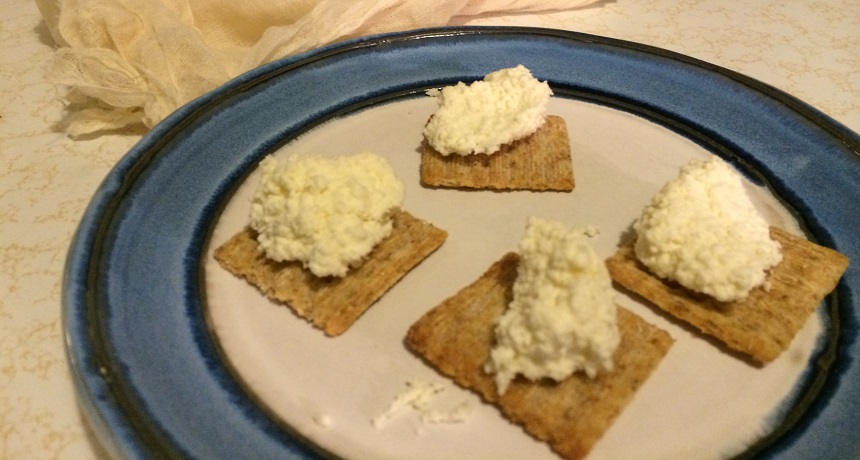
Chemistry is right in your kitchen. With a little acid and a little heat, you can make the cheese pictured here.
B. Brookshire/SSP
I love cheese. But for most of my life, I didn’t really think about where it came from. Cheese just appeared on a shelf in the grocery store. If I did think about it, I pictured cheese coming out of a big gleaming factory. Or maybe I pictured a farmer churning cream in some stainless steel vats. For many of us, there is something of a mystery to how you start with milk and end up with cheese. I’m here to show you it’s something any of us can make at home.
Along the way, we can all learn a little bit about the chemistry behind this popular food.
We start with some whole milk from your local store and a little heavy cream. There’s a lot of water in milk and cream. But these dairy products also contain many fats, proteins and sugars. Those proteins — principally casein and whey — are the most important components needed for cheese.
Casein likes to gather into clumps called micelles. The molecules making up the proteins have sections with a negative charge on them. These sections point out of the micelle, toward the watery part of the milk. The sections with no charge point toward the inside of the micelle, away from the water. While this is good for a micelle, it’s bad for cheese. The negatively charged areas stop the micelles from clustering into large clumps. Large solid clumps are what you need to make cheese.
To promote micelles clumping, you need two things: acid and heat. I got the first from buttermilk, which contains a lot of lactic acid. But you could also use vinegar or another acid.
Acids are a class of positively-charged molecules. When you add these to the milk, they neutralize the negatively-charged casein molecules. Without their negative charges, the casein molecules do not stay easily dissolved in the water. So as I added the buttermilk to my milk, its lactic acid began reacting with the casein, creating clumps.
Now I need to slowly heat up my liquids on the stove top. Sticking a thermometer in the pot helped me ensure that the mix won’t overheat. As the milk and buttermilk approach 85° Celsius (or 185° Fahrenheit), the milk’s whey proteins begin to denature, or lose their normal shape. You can actually watch as the proteins appear to fall apart. As this happens, those proteins begin clumping around the now-neutralized casein micelles. This produces big chunks of protein called cheese curd. The liquid left behind is called whey. These are the curds and whey of Little Miss Muffet fame.
All that’s left is to separate out the curds — our almost-cheese. I carefully scooped them into a cheese cloth. I added salt now and then to give it more flavor. Then I tied the cheese cloth over the ball of curds and left them to hang over sink. This allowed the extra whey to drip out and down the drain. A few minutes later, I had a very basic cheese. It was all thanks to some milk, acid and a little bit of chemistry.
You can see the recipe I used here. You can now apply some chemistry and make your own cheese.
Follow Eureka! Lab on Twitter


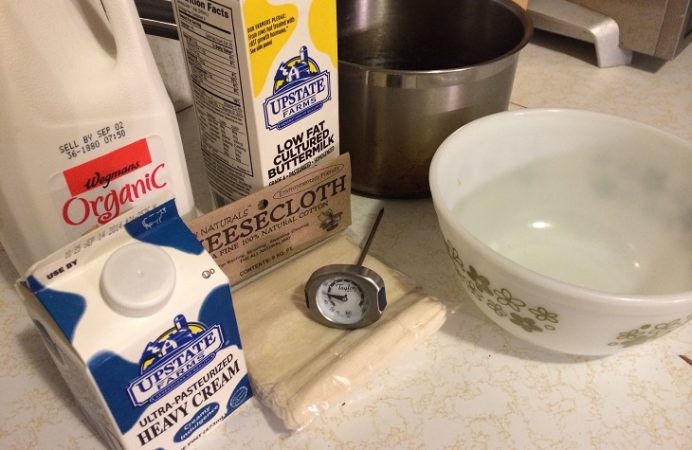
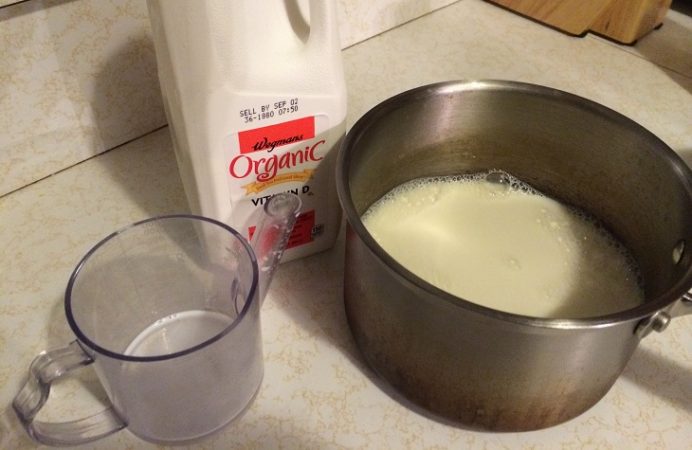
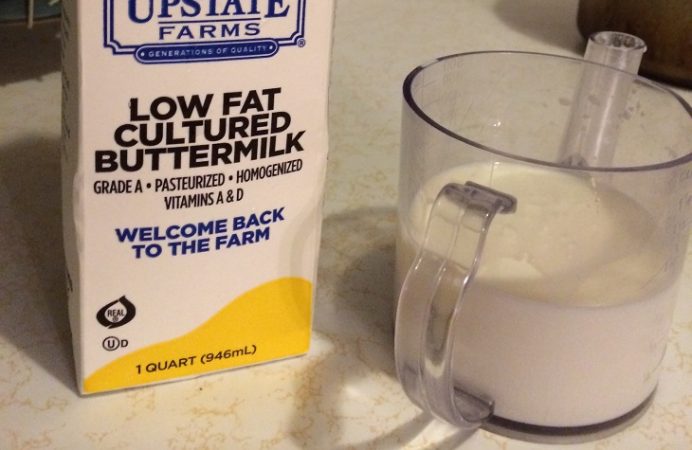
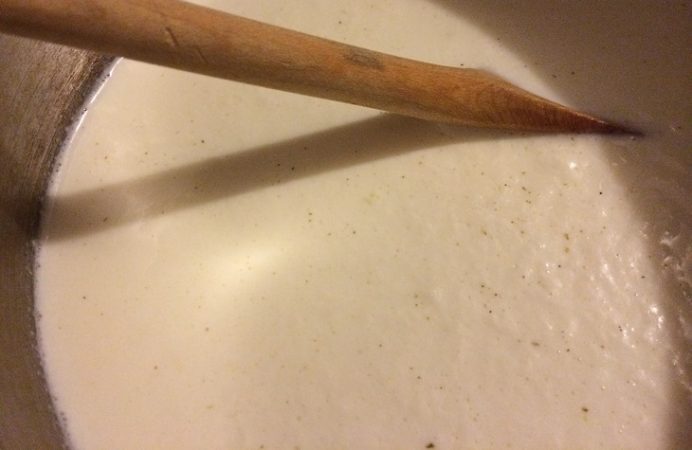
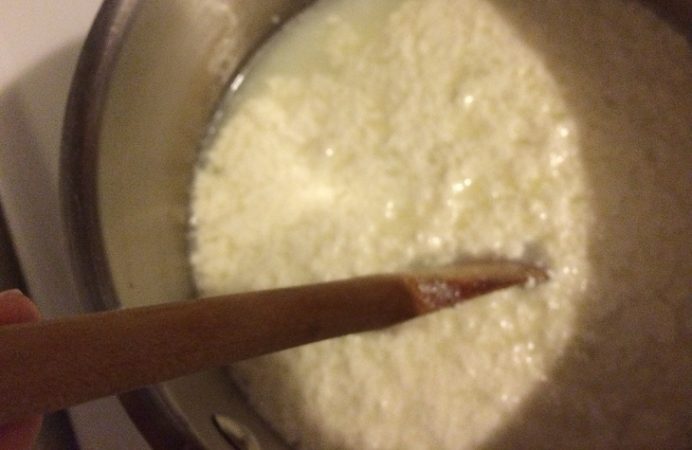
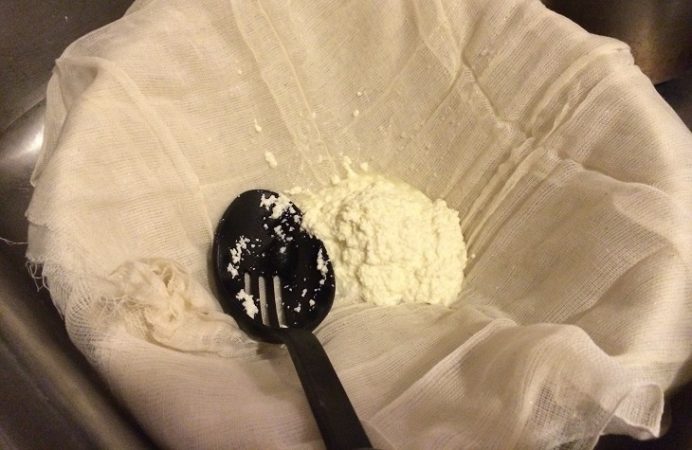
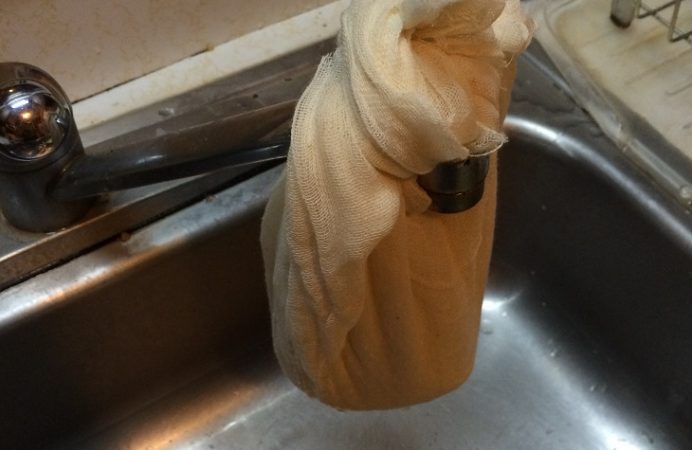
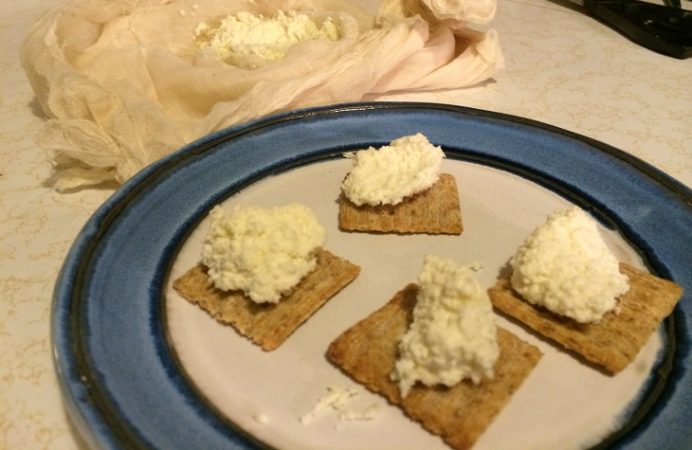
Power Words
acid A chemical that increases the level of hydrogen ions in a solution.
acidic An adjective for materials that contain acid. These materials often are capable of eating away at some minerals such as carbonate, or preventing their formation in the first place.
acidification A process that lowers the pH of a solution. When carbon dioxide dissolves in water, it triggers chemical reactions that create carbonic acid.
cheese curds The product of heating and acidifying milk. The milk can become acidic because it has soured or because an external acid can be added. The heat and acid cause the proteins in milk to denature and clump together, forming curds.
chemical reaction A process that involves the rearrangement of the molecules or structure of a substance, as opposed to a change in physical form (as from a solid to a gas).
chemistry The field of science that deals with the composition, structure and properties of substances and how they interact with one another. Chemists use this knowledge to study unfamiliar substances, to reproduce large quantities of useful substances or to design and create new and useful substances.
denature A change in the chemistry of proteins that causes them to lose their structure, usually due to stress. Stresses can include heat, acids or bases, solvents and radiation. You can watch proteins denature by cooking an egg (the egg white turns white when albumin denatures) or by making your own cheese.
lactic acid A chemical compound commonly found in milk and in exercising muscles.
ion An atom or molecule with an electric charge due to the loss or gain of one or more electrons.
micelle A tiny clump of molecules in a liquid that form because the liquid contains molecules with one charged end that is attracted to water, and one uncharged end that repels water. In milk, for example, casein proteins clump together into micelles, with their negatively charged ends facing out into the liquid.
whey The liquid left behind after milk proteins have solidified into curdles. Whey is also a type of milk protein that can be consumed as a dietary supplement.